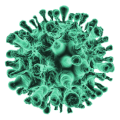Basal temperature
The basal temperature is the lowest temperature that our body registers in a state of rest. It is not as complicated as it seems: it is the temperature of the woman’s body after a period of rest, like a night’s sleep. How to measure the temperature to get pregnant has been a traditional method used by women for years.
Temperature is measured immediately after waking up, before even getting out of bed. So if you want to know how to measure basal temperature to know if you are pregnant, the first thing you have to do is put the thermometer on the bedside table.
Reference chart template
You can see that in this graph, the temperature before ovulation remains between low and medium, and when the graph marks the dotted line, it begins to rise visibly, and then we know that ovulation has already occurred because the progesterone has just finished. Climb for endometrial maintenance.
Typically the descending peak shown in the graph is where estrogen peaks, and from there, we can assume that the egg will be released soon, between 12 and 48 hours. This is the table where the day of ovulation is clearly shown, and after the period in which my period would usually come, I was able to do the test and thus confirm the pregnancy.
Sites for calculating basal temperature
Some sites do this automatic calculation. You need to measure yourself correctly in the morning with at least 5 hours of uninterrupted sleep. Here are two of them that I used to use and approve of myself.
Over time you can learn the pattern that your body shows. In my case, my temperature before ovulation never went above 35.4, and after ovulation, it went up a little: it reached 35.9 36.2, at most. However, when the pregnancy occurred, this pattern rose to 36.6, showing a significant increase in progesterone and suggesting pregnancy.
The LH surge will combine with the drop in the graph, and then the pregnancy can be optimized to occur. And remember: in this method, it is necessary to have discipline and patience in the first cycles because learning comes with time. Good luck.
Questions from readers:
How do I know if I am pregnant by basal temperature?
No method to discover pregnancy is as reliable as a pregnancy test, but it is possible to notice “something different” through temperature. If even 18 days after ovulation, the basal temperature is still high, it may indicate pregnancy.
What is the basal temperature at the time of ovulation?
Temperature is very personal and can vary from one woman to another; therefore, there is no standard. Typically, the temperature tends to drop by 0.5 to 2 degrees during ovulation, increasing when ovulation ends.
What is the basal temperature method?
Basal temperature is defined as the temperature we have in our bodies when we wake up.
The basal temperature method is reasonably practical. However, it is recommended to combine it with ovulation tests because factors can alter its exact measurement.
This method consists of recording the temperature taken each day upon waking and recording it on a graph designed for this purpose. The vertical axis will be the temperature and the horizontal axis on the days of the cycle. Every day the temperature is taken and marked with a point to form a line.
To calculate the fertile period, we will base ourselves on the fact that two or three days after ovulation, there will be a sharp increase of 0.3 and 0.5 ° C. This increase is caused by the hormone progesterone and will remain elevated until the next menstrual period. The basal temperature graph will allow us to see the day of the sudden temperature change. If there is variation between a month, the graph with the lowest values will be taken as a reference.
The first day of low basal temperature will be the first day of menstruation of the new menstrual cycle. The post-ovulatory infertile phase will begin on the third day of high temperature.
What is basal temperature measured with?
We will use a thermometer to measure the basal temperature. We can find mercury and glass thermometers or digital thermometers:
Fertility thermometer or basal thermometer: It is a clinical thermometer like the one of all the glass and mercury with a range of only 35 to 39 ° C. The thermometer must be left every night with mercury below 35ºC. In the case of taking the temperature orally, it will be necessary to wait about 5 minutes and, in the case of the vaginal or rectal route, 3 minutes.
Digital Thermometer: This thermometer is a bit more expensive, but it is less delicate and safer. After about 60 seconds, the thermometer will beep to warn us that the temperature is taken.
Image: Basal temperature thermometer Digital thermometer
The temperature should be taken before getting up and after having rested at least 5 hours and always at the same time. Factors such as alcohol, not sleeping well, staying up awake, or stress can alter the measurement. There are three ways to measure temperature:
Oral route: the tip of the thermometer will be placed under the tongue and the lips closed.
Vaginal route: it will be inserted into the vagina.
Rectal route: Vaseline or lubricant will be applied, and insert the thermometer’s tip into the rectum while in the fetal position.
To avoid any variation, it is recommended to use the same form of intake throughout the cycle.
Among the advantages of this method, we find its simplicity and that it is very economical. However, it should be remembered that it is not recommended to use the basal temperature method as a contraceptive method. As for disadvantages, we can highlight that it does not prevent pregnancy 100% and does not protect against sexually transmitted diseases.







